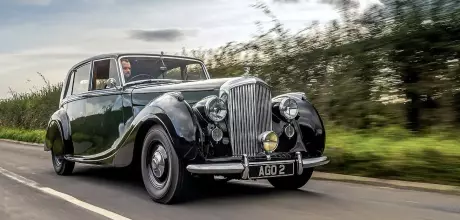1950 Bentley MkVI six-light saloon by Mulliner
From its brand-new post-war home in Crewe, Bentley redefined itself with the prescient MkVI sports saloon. Glen Waddington drives the desirable HJ Mulliner six-light version.
Photography Jonathan Jacob
THE JOY OF SIX BENTLEY MkVI
How the marque redefined itself post-war
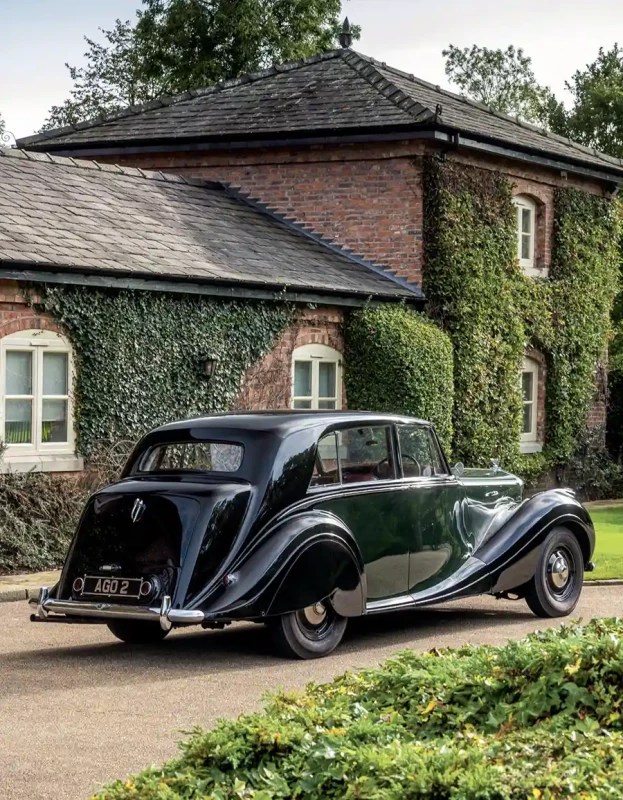
Nearly 80 years on, we still associate Bentley with Crewe, in north-western England. It wasn’t always thus; the hulking Le Mans racers of WO Bentley’s era were Londoners and, following Rolls-Royce’s take-over in 1931, Bentleys were built at the parent company’s works in Derby. From that point and up to 2004, all Bentleys were based on Rolls-Royce underpinnings and, until the advent of BMW V8s and V12s in 1998, shared only Rolls-Royce engines, too. They were marketed under the epithet of ‘the silent sports car’ and, when the first of these appeared in 1933, even WO himself declared: ‘I would rather own this Bentley than any other car produced under that name.’ Praise indeed.
‘The MkVI was perfect for the age, being as well-engineered as the equivalent Rolls-Royce but more understated’
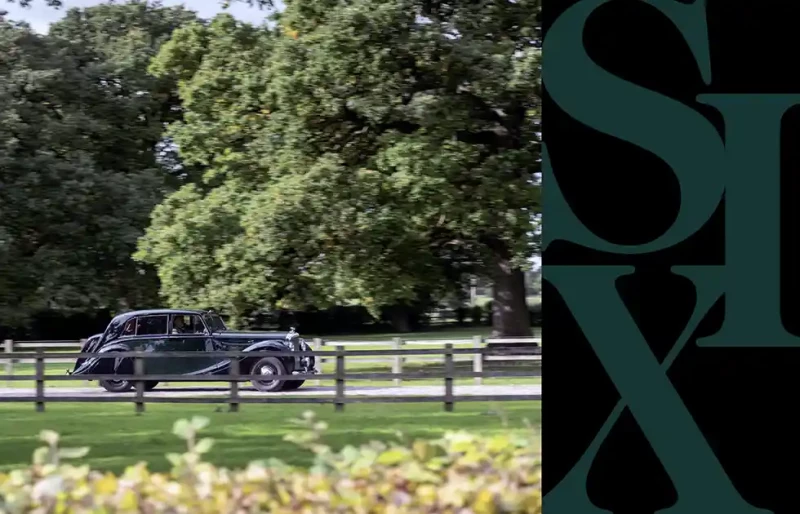
While today’s VW-owned Bentley might cite the R-Type Continental Fastback as its greatest inspiration (and who wouldn’t?), perhaps it owes at least as much to a rather more pragmatic saloon that came from Crewe, Bentley’s home from 1938, and which went on sale as close as possible to the end of hostilities. That car is the MkVI Standard Steel sports saloon.
The Crewe location was chosen for a ‘shadow factory’ at which Rolls-Royce could produce the aero engines so necessary for the war effort. The town was well-placed for road and rail links, well away from the concentration of bombing raids from Europe, and offered plentiful availability of flat land. Within only five months, 60 acres of potato fields at Merrill’s Farm became the production line for Merlin aero engines, and by 1943 more than 10,000 people were employed there.
But technology was moving apace. While the Merlin V12 was undoubtedly a superb piece of engineering, and the Supermarine Spitfire just wouldn’t have been the same without it, as the war progressed so Rolls-Royce began to concentrate on jets. When it was over, the company moved its aero engine operation back to Derby – and Crewe became the centre for car production for both marques. With a large and empty factory going spare, and the British Government clamouring for export products, Rolls-Royce and Bentley saw a new opportunity for (by their standards) a radical type of luxury car. Enter William Arthur Rowbotham.
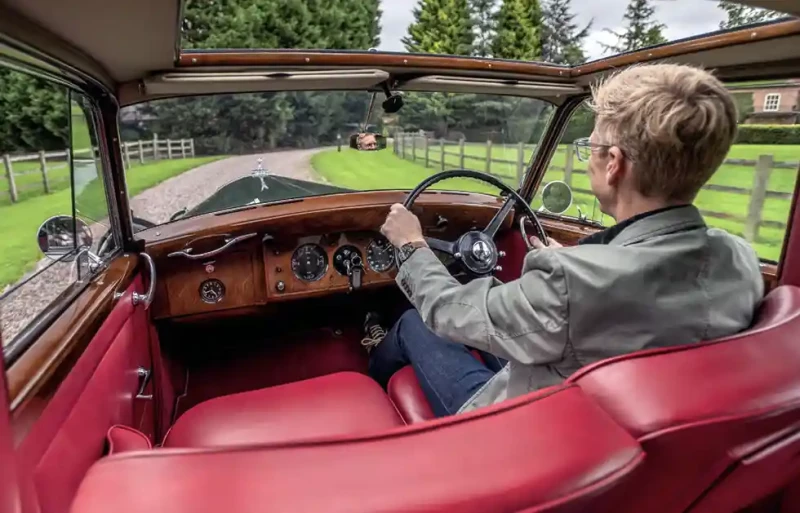
Derby-born Rowbotham had joined Rolls-Royce as an apprentice in 1919, while studying mathematics and engineering drawing at night school. After four years he qualified and became a junior technician under Ernest Hives, who was in charge of production at the Derby works. Back then, Rolls-Royce would supply rolling chassis to coachbuilders such as Park Ward, Hooper and Mulliner. By 1933, annual sales were typically around 1500 cars per year, shared across the Rolls and Bentley marques. The company would seek to increase those numbers after the war.
Rowbotham was tasked with developing military vehicles from 1940, and appointed in November 1941 as the Ministry of Supply’s chief engineer of tank design, directing Rolls-Royce’s Meteor team at Belper, near Derby. There, a new range of military engines was developed, but his attention was beginning to turn to cars as the war drew to a close. In 1944, Rowbotham realised that the market for rolling chassis with coachbuilt bodies would be limited and that any cars the company built after the war would need to cost 30% less and be fitted with a standardised body – across both marques. On the advice of Rover’s Spencer Wilks, Rowbotham approached the Pressed Steel Company, in Cowley, Oxford. Could it tool a suitable bodyshell? Rowbotham suggested 2000 per year – a third above the total pre-war average. Pressed Steel demanded at least 5000 bodies, to which Ernest Hives agreed – the ’shells would cost about half the price of a post-war Park Ward body, and the pressings would need less work before painting. The numbers worked: bodies would be used for both the Rolls-Royce Silver Wraith and the Bentley MkVI, which remained in production for nine years, with 6500 built. A further 3200 were made with a bigger luggage compartment, as the Bentley R-Type and Silver Dawn.
And so, immediately after VE Day in May 1945, the Crewe factory waved goodbye to Merlin engines and a new car production line was installed. The chassis was ready in February 1946; there was a press announcement in May at the Royal Ascot Hotel, and Crewe’s first car rolled out in the September. Rowbotham was given the title of chief engineer of cars that year, passed over as managing director of the newly formed Motor Car Division in favour of Dr Frederick Llewellyn Smith from Rolls-Royce’s Glasgow factory. Rowbotham was eventually recognised in 1949, when he was appointed to the main board of Rolls-Royce Ltd.
Such a product could have been met with disdain, and yet The Autocar gave the MkVI a resoundingly positive reception: ‘Perhaps the outstanding thought from extensive driving of the Bentley MkVI built by the world’s premier car manufacturers, Rolls-Royce, is that it has no single predominant feature but gains its unique position from a combination of superbly matched qualities that raise it above the level of other cars. Years of painstaking research and development with mechanical perfection as the goal show their results unmistakably. Smoothness and quietness and sheer quality are in the superlative.’
As for The Motor: ‘As an expensive car, the Bentley appeals not so much on account of what it does (superiority to most other cars being taken for granted) as on account of its being a pleasing possession, something of which an owner can be proud. It is a well-furnished car in which to spend long periods of time.’
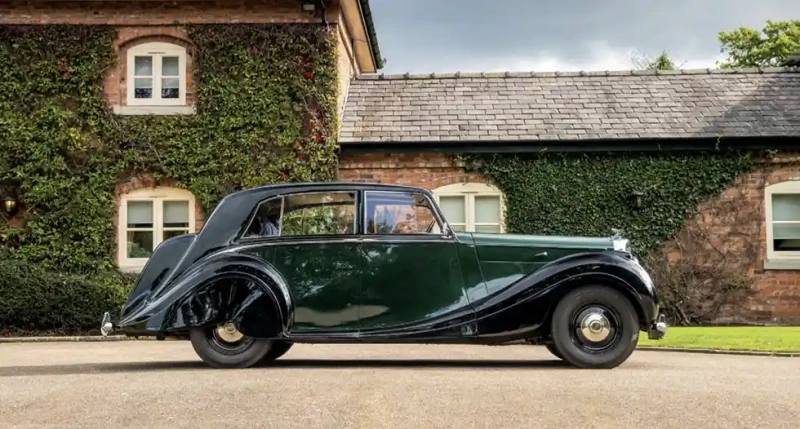
Don’t forget, this was radical stuff for the time. The MkVI might have looked patrician but, being smaller than coachbuilt saloons, as well as cheaper, it was designed to appeal to younger owners who would drive themselves rather than employ a chauffeur. In the era of rationing, even those with money avoided ostentation. The MkVI was perfect for the age, being as well-engineered as the equivalent Rolls-Royce yet more understated.
Chief stylist Ivan Evernden had worked initially with Cecily Jenner on the car’s lines; the design was finalised by John Blatchley, who had arrived as a draughtsman at Rolls-Royce Aero Design in 1940 and moved to the car division in 1945. They were a strong team who would later be responsible for the stunningly sleek R-Type Continental Fastback: Evernden had joined Rolls-Royce in 1916 and by 1922 was working in the design department as a prot.g. of Sir Henry Royce. Blatchley, meanwhile, started at coachbuilder J Gurney Nutting & Co in 1935 and was appointed chief stylist there a year later at the age of 23 (as a young teenager he’d spent three years in bed with rheumatic fever, and passed his time sketching cars and building models). He went on to style Rolls-Royces and Bentleys for two decades and more, from the Silver Dawn to the Silver Shadow, and became Crewe’s chief styling engineer in 1955.
Yet despite the democratisation of Crewe’s products, Bentley (and Rolls-Royce) weren’t about to leave behind their coachbuilt roots. Around 80% of MkVIs were the Standard Steel saloons, but chassis were supplied to coachbuilders, too, which produced four-door, two-door and drophead models. Sales of the MkVI far outstripped those of any pre-war Bentley, with 4001 examples built, of which 3171 were Standard Steel models. Of the 830 coachbuilt cars, among the most sought-after now are the 241 built by HJ Mulliner. Of those, 125 were four-door, six-light saloons – one of which we happen to have here. This car was delivered in January 1950 to its first owner, William Lount of the London-based paint maker and plaster supplier Alabastine Co Ltd. It later spent part of its life in Switzerland and joined Bentley’s own heritage collection in 2021. We’ll come back to the obvious delights of its subtly reimagined coachbuilt bodywork and elegantly trimmed interior and concentrate for now on the sweeping authority with which it gathers pace as we leave the historic Pyms Lane site in Crewe and head for Cheshire’s more rural charms.
You sit upright on a plumply plush leather armchair, elbows bent, fingers caressing the slim Bakelite rim of a broad three-spoke wheel. The handbrake and gearlever are down to your right; they threatened to disappear up your trouser leg on entry but are in easy reach. The fact that you won’t be stretching across to your passenger for every shift seems curiously apposite, considering the modest mores of the Bentley’s likely clientele when new.
The car needs to be completely stationary when the non-synchro first gear is selected, and it whines as you pull away so you swiftly change to second. Movements are lengthy fore and aft but tight across the gate, and the mechanism feels silken and solid. A swift double-declutch aids smoothness, and the big, torquey straight-six pulls willingly, though it’s no revver. Keep it in its happy zone and it feels unstoppable, exerting itself with quiet decorum, while only a muted sensation of threshing and reciprocation accompanies the breathy exhaust. It’s stoic and refined, rather like a 1950s statesman.
More surprisingly, it’s also encouraging and engaging. The steering goes without much of the vagueness of many post-war cars and, while relatively soft coil and leaf springs favour ride over handling, the Bentley keeps its weight low, so it settles into bends and moves through them with neutrality. Lumps and bumps go largely unnoticed, and transmit little noise into the cabin. Time spent in the rear compartment is enjoyable, too.
Maybe the typical MkVI owner preferred not to be chauffeured, but there’s space aplenty to check the financial press, or for full evening dress to go unruffled on social occasions. You emerge facing forwards and upright, thanks to rear-hinged doors, which is a significant difference between this and the Standard Steel body: on those, the front and rear doors are hinged from the central pillar, making it easier for the owner/driver to get in and out while navigating the somewhat inconveniently placed gearlever and handbrake. Chauffeur be damned! This car is all about the back seats, and the more extensive glazing makes the rear compartment a more enjoyable place in which to spend time, if slightly less private as a result.
Outside, the lines are sharper, more graceful, particularly the sweeping wings that flow into the doors and running boards. It’s far more crisply detailed than the Standard Steel saloon, and the nature of its construction means it would have been considerably more expensive to buy, yet still it falls short of showiness.
Mechanically it’s identical, featuring a separate chassis with independent coil springs at the front and a live axle and leaf springs at the rear. Hydraulically adjustable rear dampers are controlled from the steering wheel hub, via a switch that operates a valve to provide or release pressure by diverting transmission oil. Drum brakes front and rear are assisted by Rolls-Royce’s transmission-driven servo. They’re up to the job, but don’t go racing.
Under the bonnet is the F-head straight-six, which has origins in the 1920s, though in the usual Rolls-Royce way was refined, conservatively engineered, robustly built and constantly revised during its career. Known as the B-series (as here, the B60), it was designed with longevity in mind, its engineers having aimed at a service life of 100,000 miles before any need for refurbishment.
Such obvious build quality, all that leather and wood, spacious accommodation, quiet power, and a feeling of indomitability on the road: the MkVI offered a heady combination of talents and, having made its debut in 1946, got a head start on many other manufacturers, most of whom couldn’t release new products until at least two years later. But one tiny detail pleases this driver above all others, and it’s a lever in the driver’s door. While all three other windows are wound up and down in conventional fashion, the driver’s is actuated by a quick-acting crank: push down and the window drops; pull back up and the window swiftly closes. In an era before electric motors were commonplace in British cars, it’s an elegant solution. If anything typifies the MkVI, it’s elegant solutions. What better way to redefine the marque?
TECHNICAL DATA 1950 Bentley MkVI six-light saloon by Mulliner
- Engine 4257cc straight-six, inlet-over-exhaust, two SU carburettors
- Max Power 132bhp @ 4500rpm
- Max Torque 199lb ft @ 2300rpm
- Transmission Four-speed manual (no synchro on first), rear-wheel drive
- Steering Cam and roller
- Suspension Front: double wishbones, coil springs, double-acting lever-arm dampers. Rear: live axle, semi-elliptic gaitered leaf springs, double-acting lever-arm dampers, adjustable at rear
- Brakes Drums, servo-assisted
- Weight 1804kg
- Top speed 93mph
- Acceleration 0-62mph 13.9 sec
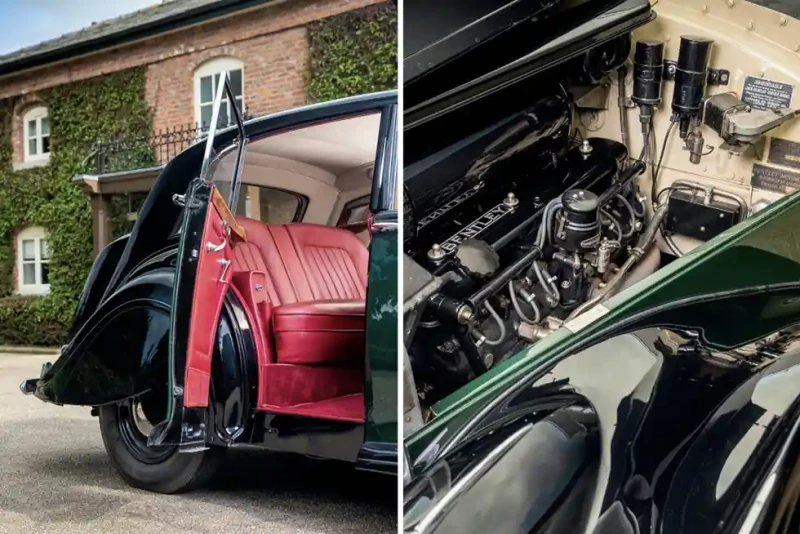
Above and opposite Bentley MkVI targeted a new post-war market of younger self-drivers, yet it’s still a sizeable luxury car, with a beautiful leather and walnut interior.


